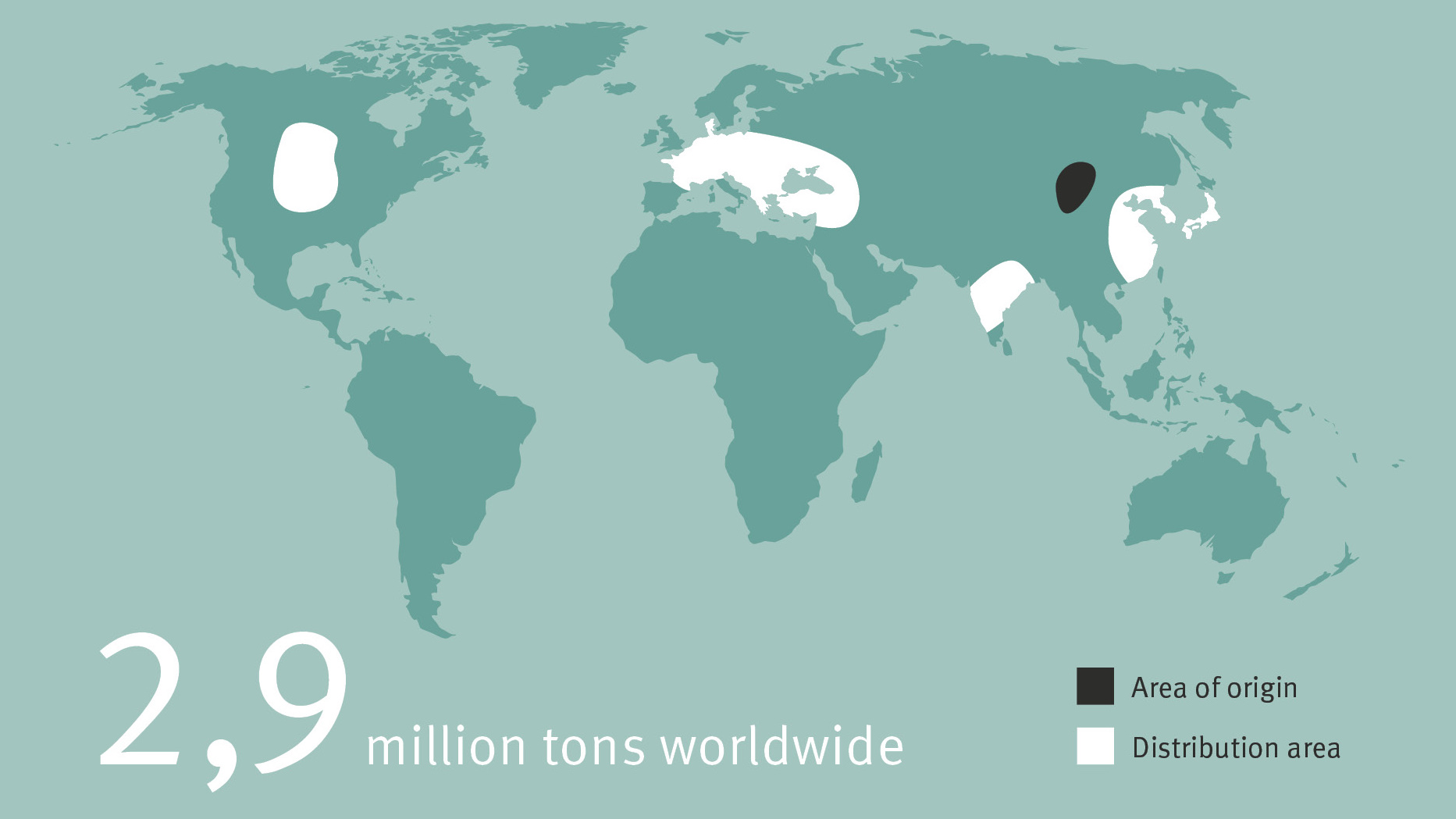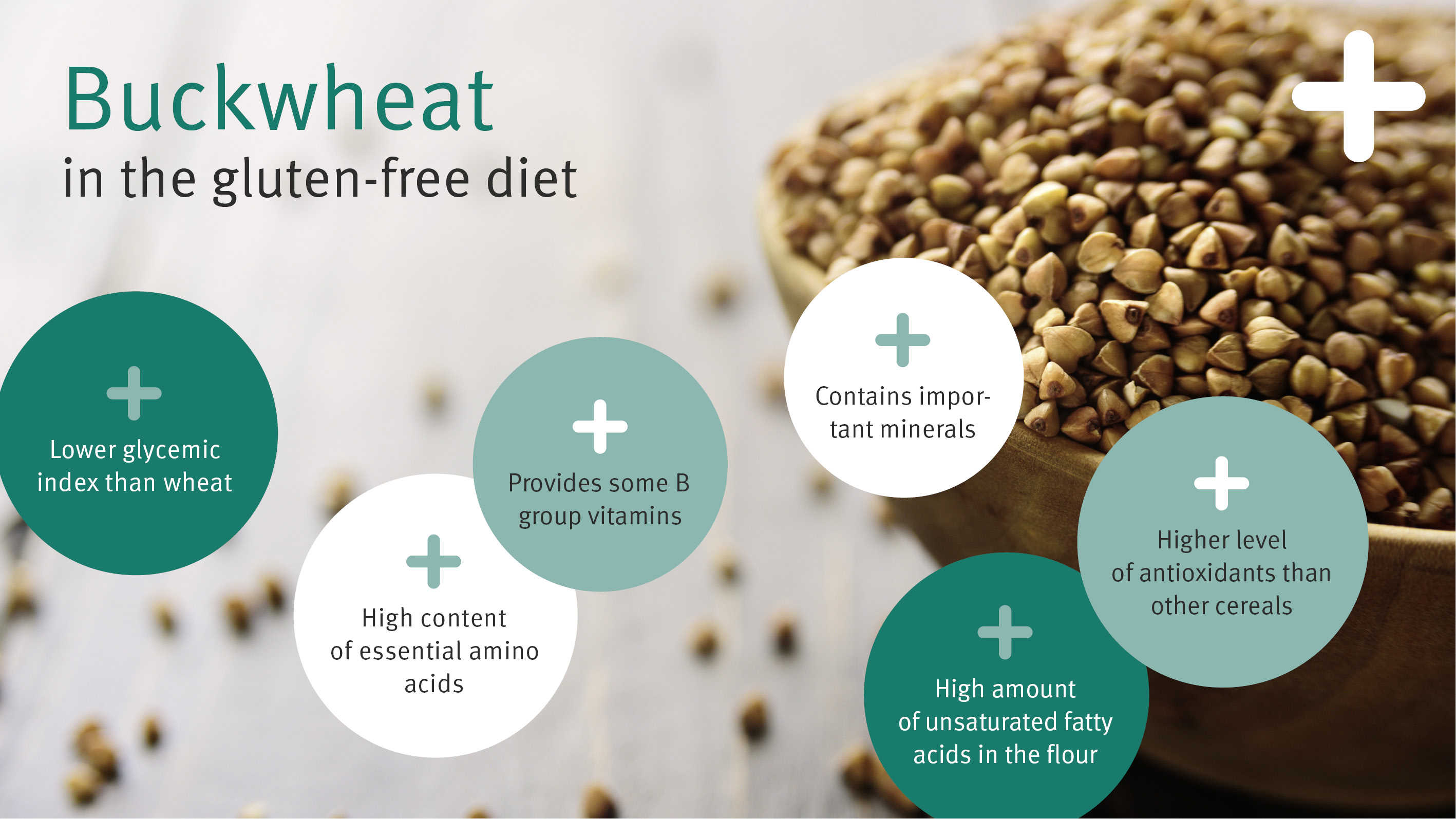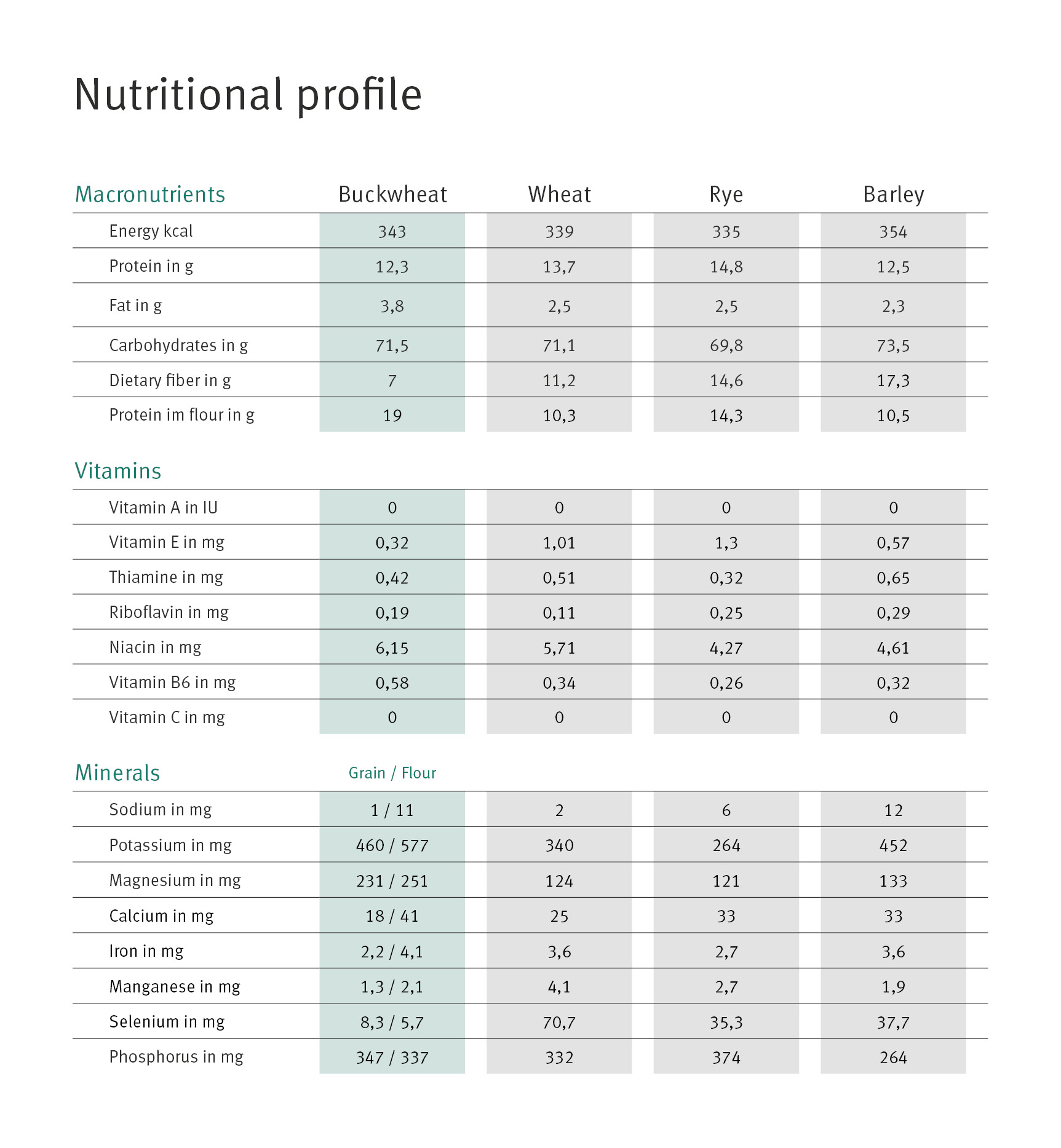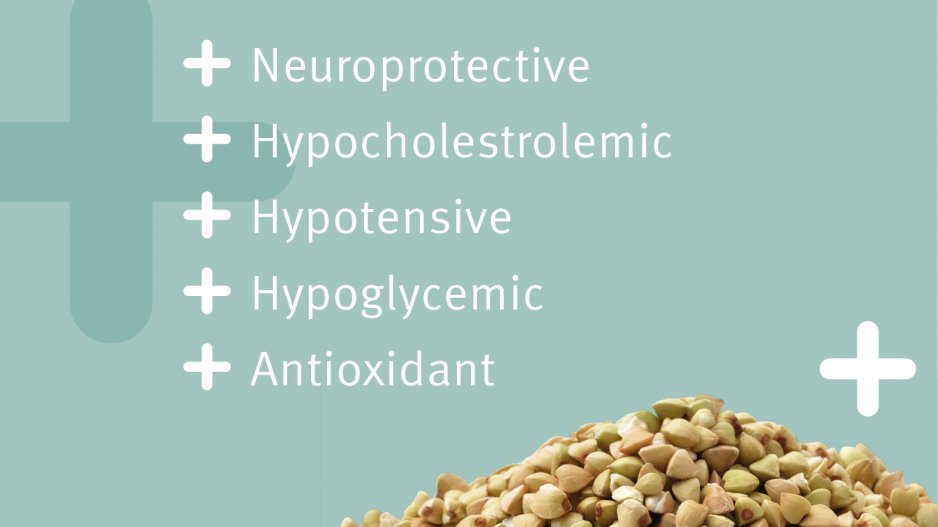Despite its name, buckwheat is a gluten-free pseudograin that is generally safe for people with celiac disease and other gluten-related disorders. Buckwheat is high in plant-based protein, fiber, B-vitamins, and minerals. It is typically prepared similarly to conventional grains and can be found in similar dishes (e.g. flours, baked goods, salads, etc.).
Description
Common buckwheat (Fagopyrum esculentum) belongs to the knotweed family and is therefore classed as a pseudograin. There are many different buckwheat species but only F. esculentum (common buckwheat) and F. tataricum (Tartary buckwheat) are cultivated for human consumption.
Cultivation
Buckwheat is an herbaceous plant with an erect stem that forms numerous branches at the nodes. It can grow to be between 60-120cm tall. Buckwheat is distinguished by its polygonal shaped fruits, known as achene, as well as its bare, heart-shaped leaves and stems and fibrous roots. It flowers during the month of June, which attracts insects for pollination. Eventually the flowers mature into edible brown, triangular fruits.




Where is buckwheat cultivated?
Buckwheat was first cultivated in West China, Tibet, and East India. Though it is still cultivated in these areas, it now grows well Russia, Central and South East Asia, Europe, and the United States, where climates are cool and humid.
According to the Food and Agriculture Organization (FAO) of the United Nations, in 2018, 2.9 million tons of buckwheat were produced worldwide. Russia and China lead the world in buckwheat production. However, France and Poland are the biggest producers in Europe.
Information on harvesting buckwheat
Because buckwheat is sensitive to unfavorable weather conditions, seeds are typically planted in May or June, after the last frost has passed. The nutlets take ten to twelve weeks to mature and can be harvested from late August to early September. Buckwheat yield fluctuates greatly, ranging from 5 to 30 quintals per hectare.
Nutritional profile of buckwheat

Nutrition Table

Tab. 1 Macro- and micronutrient composition of buckwheat compared to other grains. Source: Przybylski, 2009 and Yilmaz, 2020
Carbohydrates
100 g of buckwheat contains on average 70 g of carbohydrate. The main carbohydrate component of buckwheat (65-70%) is starch. It has a lower glycemic index than wheat.
Protein
100 g of buckwheat contains around 13g of protein. Buckwheat flour has the highest percentage of protein (19%) of all grains. Additionally, the protein in buckwheat has a high biological value of over 90% due to its essential amino acid content. Buckwheat protein is higher in lysine, threonine and tryptophan than traditional grains.
Fats
Buckwheat contains healthy unsaturated fatty acids. In fact, the fatty acid profile is 78-80% unsaturated, primarily in the form of linoleic acid and oleic acid. Buckwheat does have some saturated fat in the form of palmitic acid.
Vitamins and Minerals
Buckwheat contains several B vitamins, including B1, B2, B3, and B6. These are critical for energy , brain function, and cell function.
The minerals found most often in buckwheat are manganese, magnesium, iron and phosphorous.
Antioxidants
Buckwheat contains higher levels of antioxidants than other grains like barley, wheat, and rye. For example, it is rich in polyphenols, which have anti-inflammatory properties. Major flavanoids found in buckwheat are rutin, quercetin and d-chiro-inositol. Rutin in particular has a number of health benefits including antioxidant and anticarcinogenic properties.
References
- B.O. Eggum, I. K. (1980). Chemical-Composition and Protein-Quality of Buckwheat (Fagopyrum esculentum Moench). Qualitas Plantarum Plant Foods for Human Nutrition(Band 3), S. 175-179. doi:doi:10.1007/BF01094020.
- Beitane, I. (2017). Fatty acid composition in buckwheat (Fagopyrum esculetum) flours and their extruded products. Research Gate. doi:doi: 10.15544/RD.2017.017
- Christa, K. (2008). Buckwheat Grains and Buckwheat Products – Nutritional and Prophylactic Value of their Components – a Review. Czech J. Food Sci, S. 153–162.
- Holasova, M. (25. January 2002). Buckwheat—the source of antioxidant activity in functional foods. (Volume 35), 207-211. doi:https://doi.org/10.1016/S0963-9969(01)00185-5
- Katan, D. O. (2016). Analysis of morphological and biochemical characteristics of buckwheat (Fagopyrum esculentum Moench) in comparison with cereals. CyTA - Journal of Food, 14:2, S. 176-185. doi: doi: https://doi.org/10.1080/19476337.2015.1076522
- Li S., Z. Q. (2001). Advances in the development of functional foods from buckwheat. CRC Critical Reviews in Food Science and Nutrition 41, S. 451-464.
- Lui, C. C. (2008). Antioxidant Activity of Tartary (Fagopyrum tataricum (L.) Gaertn.) and Common (Fagopyrum esculetum Moench) Buckwheat Sprouts. Journal of Agricultural and Food Chemistry, S. 173-178.
- Przybylski R., G. E. (2009). A Review of Nutritional and Nutraceutical Components of Buckwheat. The European Journal of Plant Science and Biotechnology.
- Qiu, J. L. (2016). Protective effect of tartary buckwheat on renal function in type 2 diabetics: a randomized controlled trial. Therapeutics and Clinical Risk Management, S. 1721–1727. doi:doi: 10.2147/TCRM.S123008
- Santos KFR, O. T. (40 1999). Hypolipidaemic effects of narigenin, rutin, nicotinic acid and their associa- tions. . Pharmaceutical Research , S. 493-496.
- Yildzogle-Ari N, A. V. (5 1991). Pharmalogical effects of rutin. Phytotherapy Research , S. 19-23.
- Yilmaz, H. A. ( 2020 ). Buckwheat: A Useful Food and its Effects on Human Health. Current Nutrition & Food Science 16, S. 29-34.
- Zhou, X. Y. (2018). Tartary buckwheat protein prevented dyslipidemia in high-fat diet-fed mice associated with gut microbiota changes. Food and Chemical Toxicology, S. 296-301. doi:https://doi.org/10.1016/j.fct.2018.02.052
